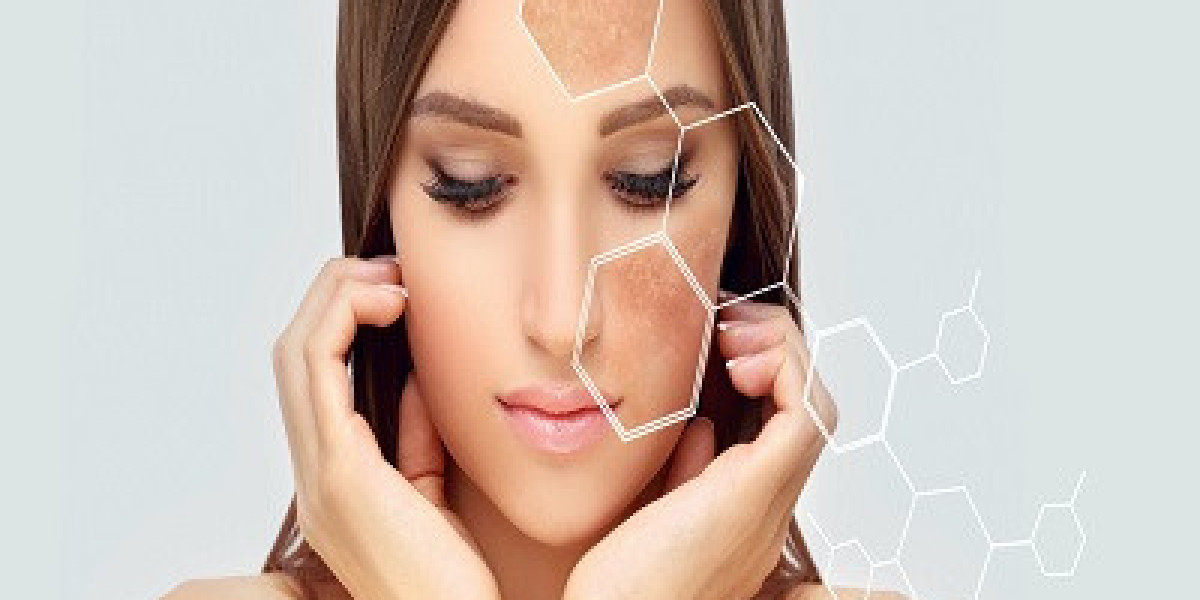Melasma is a chronic skin condition characterized by symmetrical, blotchy, brownish facial pigmentation. It is often triggered by factors like hormonal changes, UV exposure, and genetic predisposition. The condition is challenging to treat, and patients often find themselves deciding between topical therapies and advanced procedures like laser treatments. Both approaches aim to reduce pigmentation, but they differ significantly in mechanism, intensity, duration, and outcomes. When seeking Melasma Treatment in Islamabad, understanding the comparative effectiveness of these options is essential to making informed treatment choices.
Understanding Topical Treatments for Melasma
Topical treatments are usually the first line of defense against melasma. They include prescription creams and over-the-counter formulations designed to reduce melanin production, encourage skin turnover, and protect against further pigmentation.
Common Topical Agents:
Hydroquinone: Considered the gold standard for melasma, hydroquinone inhibits tyrosinase, the enzyme involved in melanin production.
Tretinoin: A vitamin A derivative that promotes skin cell turnover and helps fade pigmentation.
Corticosteroids: Often used in combination therapies to reduce inflammation and enhance the efficacy of other ingredients.
Kojic acid, Azelaic acid, Tranexamic acid: Alternative lightening agents that offer efficacy with fewer side effects.
Sunscreens: Daily broad-spectrum SPF 50+ is mandatory to prevent worsening of melasma.
Benefits of Topical Treatments:
Non-invasive and cost-effective
Safe for long-term use when monitored
Minimal side effects if used properly
Suitable for all skin types
Limitations:
Results can be slow—often taking 8 to 12 weeks
Risk of irritation, redness, or rebound pigmentation
Less effective in deeper dermal melasma
Requires strict adherence to daily regimen
Understanding Laser Treatments for Melasma
Laser treatments involve the use of focused light energy to break down pigmentation within the skin. Several laser modalities have been employed in melasma management, each with distinct properties and efficacy levels.
Common Laser Options:
Q-switched Nd:YAG laser (1064 nm): Penetrates deeper layers of the skin and targets melanin with minimal skin damage. Often preferred for darker skin types.
Fractional lasers: Target micro-zones of skin while leaving surrounding tissue untouched, promoting faster healing.
Intense Pulsed Light (IPL): While not a laser, IPL uses light energy in a similar manner and is occasionally used in certain melasma cases.
Benefits of Laser Treatments:
Faster visible improvement compared to topicals
Effective for stubborn or deep dermal melasma
Can be used in combination with topical treatments for enhanced results
Limitations:
Higher cost than topical therapy
Risk of temporary redness, swelling, or post-inflammatory hyperpigmentation
Requires experienced professionals to avoid adverse effects
Often necessitates multiple sessions
Comparing Effectiveness: Topicals vs. Lasers
Effectiveness can vary greatly depending on individual skin type, severity of melasma, and adherence to post-treatment care. However, certain comparative conclusions can be drawn:
1. Speed of Results
Lasers: Generally show faster results, often noticeable within a few sessions.
Topicals: Require more time—visible results typically appear after 6 to 12 weeks.
2. Depth of Pigment
Lasers: More effective for dermal melasma that lies deeper in the skin.
Topicals: Better suited for epidermal melasma or milder cases.
3. Risk Profile
Topicals: Safer for long-term use with proper guidance. Less invasive and more controlled.
Lasers: Greater risk of side effects, especially in patients with darker skin tones. Requires skilled application and careful post-care.
4. Cost Consideration
Topicals: Significantly more affordable and accessible.
Lasers: Higher upfront cost but may reduce the need for prolonged therapy.
5. Sustainability of Results
Topicals: Require continuous use and maintenance regimens to sustain results.
Lasers: Results may be more dramatic initially, but recurrence is common without ongoing care.
6. Combination Therapy
Research and clinical experience increasingly support the combined approach—using topical treatments alongside or after laser therapy. This enhances effectiveness, minimizes recurrence, and allows for better skin health maintenance.
Clinical Evidence and Dermatological Perspectives
Several studies have explored the relative efficacy of these two approaches:
A 2020 clinical trial found that combining Q-switched Nd:YAG laser treatment with topical agents like hydroquinone and sunscreen resulted in significantly better outcomes than either modality alone.
Another study published in the Journal of Cosmetic Dermatology indicated that patients who received fractional laser treatment followed by topical maintenance therapy had lower relapse rates over a 12-month follow-up period.
These findings confirm that while lasers provide more immediate improvement, topical therapy is indispensable for long-term pigment control.
Patient Suitability and Customization
Determining the best course of action requires an individualized approach. Factors such as skin type, melasma classification (epidermal, dermal, or mixed), sensitivity, and previous treatment history must be considered.
For new or mild cases: Topical treatments, strict sun protection, and regular monitoring may be sufficient.
For resistant or chronic cases: Incorporating laser therapy under the guidance of a dermatologist can lead to better and faster results.
For patients with sensitive or darker skin: A conservative approach with low-strength lasers and mild topicals is recommended to avoid complications.
Role of Maintenance Therapy
Regardless of the initial treatment method, melasma is prone to recurrence. Patients are advised to:
Continue using topical lightening agents as directed
Apply sunscreen daily, regardless of weather or season
Undergo periodic evaluations and possible maintenance laser sessions
Avoid triggers such as hormonal medications, heat, and excessive UV exposure
Conclusion
When it comes to melasma management, both topical treatments and laser therapies offer distinct advantages. Topical agents are safe, affordable, and effective for superficial pigmentation, while lasers provide a more aggressive option for deeper or stubborn melasma. However, the most effective approach is often a combination of both, guided by an experienced dermatologist and tailored to the patient's unique needs.








